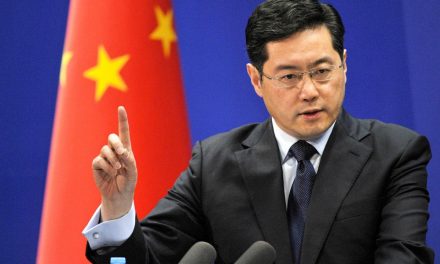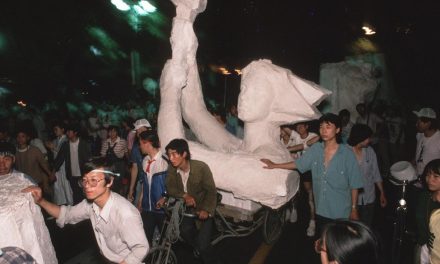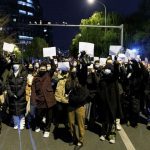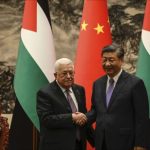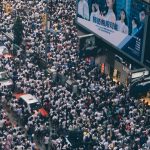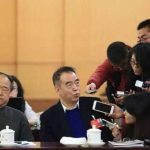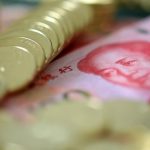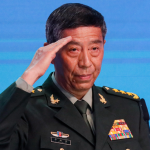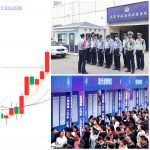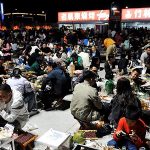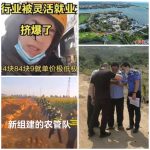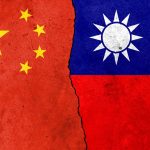BY BRADLEY A. THAYER AND LIANCHAO HAN
It is rather curious that the Trump administration has taken two serious actions this week to sanction China while U.S. and Chinese trade officials meet in Washington to try to cement the trade deal that was reached in May but rejected by Chinese President Xi Jinping.
The two sanctions include the Commerce Department’s export restrictions, announced on Monday, to ban the sale of U.S. products to 20 Chinese police bureaus and police college in Xinjiang, and eight Chinese companies involved in mass surveillance in the same region. On Tuesday, the State Department’s announced visa restrictions on Chinese government and Communist Party officials involved in persecution of Uighur and other ethnic groups in Xinjiang.
In a tweet, Secretary of State Mike Pompeo was succinct: “China has forcibly detained over one million Muslims in a brutal, systematic campaign to erase religion and culture in Xinjiang. China must end its draconian surveillance and repression, release all those arbitrarily detained, and cease its coercion of Chinese Muslims abroad.”
No doubt these are solid legitimate reasons for the sanctions — which we strongly believe are overdue. But the question is not whether the Trump administration should have taken these actions, but instead is: Why now, in the middle of the trade talks?
Our guess is that the Sino-American trade renegotiation has encountered some difficulty. The White House wants additional pressure to close the deal, to augment the economy before the 2020 presidential election. On Monday, White House economic adviser Larry Kudlow said the U.S. would be open to even a short-time deal, as long as “structural issues” are resolved. He reported progress in Sino-American trade, including China’s purchase of more American soybeans, pork and wheat.
The Chinese reportedly are resisting Kudlow’s suggestion of addressing structural issues, which they claim crosses Beijing’s “red line.” China demands that the U.S. respect its economic system of socialism with Chinese characteristics. Previously, Xi Jinping stated that the agreed trade deal from earlier this year infringed on Chinese sovereign rights. But China repeatedly expresses its willingness to address some of the issues in a balanced manner.
This week was to conclude with high-level talks between China’s deputy premier, Liu He, and U.S. Trade Representative Robert Lighthizer. Although the Trump administration may not acknowledge that the two sanctions actions are connected to the trade talks, we submit that they likely are connected.
For example, China’s atrocities in Xinjiang against the Uighur and other ethnic peoples have been reported in detail for years. Human rights organizations repeatedly have urged a strong response from the White House — in particular, the employment of the Global Magnitsky Act to sanction Chinese Communist Party officials in Xinjiang, including party chief Chen Quanguo. They are primarily responsible for the internment camps that detain over 1 million Muslims, and are creating a mass surveillance system to repress Muslims. The State Department supposedly was prepared to designate Magnitsky human rights abusers in December 2018, but this did not happen. That raised doubts about the administration’s commitment to enforce vigorously this law.
The visa sanction announced this week has lower legal requirements than the Global Magnitsky Act sanction to target foreign corrupt officials and human rights violators, and is less severe because the latter also freezes assets. There are several authorizations for the State Department to issue this visa lookout and ban even the perpetrators’ family members. One of these is a visa ban authorized under Section 7031(c) of the Department of State, Foreign Operations, and Related Programs Appropriations Act, 2019. Other authorizations include the Immigration and Nationality Act and the International Religious Freedom Act, which target severe religious persecution, torture, extrajudicial killings and the flagrant denial of the right to life, liberty or the security of persons.
China has more than 30,000 surveillance companies employing collectively more than 1.6 million people. More than 1,500 of these companies are located in Xinjiang, working to forge the pervasive surveillance system. China uses Xinjiang as a testing ground for its new surveillance technologies.
Two leading Xinjiang surveillance companies, Leon Technology Co. and Xinjiang Sailing Information Tech Co. Ltd., are missing from the Commerce Department’s list. They have built surveillance platforms in many cities and detention centers in southern Xinjiang. Moreover, Beijing Superred Technology Ltd. Co. provides equipment and technology to Xinjiang police to implement region-wide iris collection of all Uighur and other ethnic peoples.
Worse still, China now designates Xinjiang as its surveillance technology export hub to support other authoritarian governments participating in its Belt and Road Initiative.
Consequently, in our view, the two sanctions are timely and a welcomed move. However, compared to the atrocities against the Uighur and other ethnic peoples committed by the Chinese Communist Party, they are neither a sufficient nor a proportional response.
The White House must designate Chen Quanguo and his subordinates as gross human right abusers under the Global Magnitsky Act. All surveillance companies in Xinjiang should be placed on the entity list. The U.S. should ban exports to and imports from these companies, and deny the companies access to U.S. capital markets by delisting and deregistering them.
Any U.S. action in this regard must be joined by its allies — indeed, all states concerned with Beijing’s oppression of its people in Xinjiang or elsewhere. An insufficient response from the U.S. only encourages the Chinese Communist Party’s sustained campaign of ethnic, religious and cultural genocide in Xinjiang.
This article first appeared in The Hill on 10/11/19 12:00 PM ET

